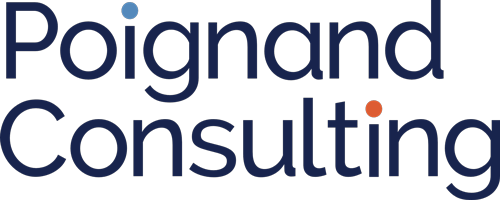
First and foremost is navigating the shut-down. Then, comes the ramp up or bounce back into a post-COVID-19 world. The businesses that successfully reframe and adapt their strategic purpose, culture and operations will be the ones that prosper.
The customer remains a moving target
The vast majority of the world’s most successful businesses place the customer at the centre of everything they do. It’s standard practice. Right now, the continuous change in customer attitudes and behaviour is the constant that we can rely on into the future.
Today, customer psychology observations and the measurement of customer behaviour are well advanced. So, while almost everything else is unknown, we are well placed to predict trends in customer behaviour. It is therefore essential and logical that having a customer-centric view is the starting point for strategic thinking and business readiness over the coming months.
The pressure points of change
Let’s start by examining some of the pressure points on customers and B2B customers throughout the COVID-19 crisis as an overview.
A threat to basic needs.
Maslow's hierarchy of needs is a motivational theory comprising a five-tier model of human needs and is instructive within customer psychology. From the bottom upwards, the needs are: physiological; safety; love and belonging; esteem; and self-actualisation.
At a time like now, threats to our basic needs such as access to food through lockdowns and panic buying along with personal safety and income security, rise in prominence.
Maslow’s theory states that each hierarchical tier must be more or less satisfied before we move onto the next level. So, at the moment, most people are understandably stuck in a mindset of basic needs.
Social disruption and rapid change
The change that so many people have applied to their daily lives over the past weeks is genuinely remarkable. For a society to have accomplished this level of change and compliance is a credit to us all. A combination of self-preservation and care are defining characteristics of our change in attitude and behaviour. But change and disruption remain hugely stressful for many.
Social isolation
Human beings are emotional creatures who try to be rational, but whose behaviour is driven by emotion. Even before COVID-19, many people felt the harmful effects of isolation. Now, this crisis takes this issue to a new level and is one of the leading health impacts competing with the COVID-19 virus.
We’re learning new tricks
Who would have believed how fast such a large proportion of the workforce could begin to operate from home in such a short period? It’s likely to change our views on workforce flexibility and productivity.
Creativity comes to the fore
We are all inspired by the inventiveness of people in times of necessity. Creative people set a great example that we can all aspire to and that businesses need.
There’s something wrong with the natural world
Our current age of knowledge is changing our world view and has played a part in creating ideological tribes who seek to maintain the status quo. We’ve seen this emerge within our environmental debate for decades. And now we learn that we have contracted a killer disease from bats! Never mind that this is a long-established basis of human viruses. It is terrifying for many and reinforces our concerns with the state of the natural world.
Concentrated supply chains are broken
We’ve had many clues about the risks of concentrated global supply chains for many years. For example, the 2011 Tsunami in Japan suspended supplies of an airbag component that stopped automotive production lines the world over.
Now, the availability of safety equipment to deal with this crisis, the availability of some foods, core chemicals and components have severely limited the supply to some industries.
How will the pressures change customers?
The pressures outlined above will all play out in the way that consumers and businesses view the world. And that will change the way that they buy and transact. Using lessons learned during previous economic downturns, and our collective fears and need for security following the 911 tragedy in 2001, we can predict likely trends. These pressures play out like behavioural forces that can have lasting impacts. Therefore, please don’t read the effect of these trends as being like a behavioural switch. But more than likely, they will change our behaviour, however subtlety.
Our home is our castle
In times of stress and uncertainty, our homes provide a sense of belonging and security like nowhere else. We feel safe there.
Opportunities will exist for businesses that make our home a better place to be.
Austerity becomes the new black.
When many people in the community suffer financially, conspicuous forms of consumption become less desirable.
Luxury brands will be under pressure to change how their brands and products are promoted. Wealthy consumers will still be attracted to luxury brands, but their desirability will become more private. Therefore, the relative weight on quality and authenticity rise versus conspicuous bling.
The most significant benefit will likely flow to those brands that provide genuine value. That is good quality at a reasonable price. We're already well trained as price shoppers so little will change there.
Sustainability gets real.
The concept of sustainability has been growing steadily in importance for decades. More recently, with fires, droughts and rising temperatures, there’s been a growing feeling that things are not right in our natural world. The Australia Institute Climate of the Nation 2019 Report shows that Australians are becoming increasingly concerned about the practical risks of long-term climate change. COVID-19 will likely reinforce this feeling.
Purity is safety
What we eat and where it comes from has been placed front and centre. If bats in a wet market in Wuhan can create a global pandemic, what happens next?
The already growing consumer appreciation and demand for fresh local produce will likely increase. A clear trend to latch onto is the rise of the local food industry in Tasmania. More opportunities can be created from this trend.
Experience finds a new driver
In recent years, the luxury in which we live compared to our history and other parts of the world have driven a desire for authentic experiences. While this will quite probably continue, it will likely be accelerated by a desire to simply enjoy life, now that less can be taken for granted.
Businesses reframe innovation
Businesses are made of people and ultimately follow consumer behaviour trends, albeit with a higher degree of pragmatism.
While the business world has been transformed by technology and leadership innovation in recent decades, it won’t be enough. Business leaders will consider COVID-19 as a change point is our history that requires long-lasting change. We will have observed such significant impacts on economic sustainability that shareholders will demand that leaders manage a new set of risks for the foreseeable future.
Periods of economic recession have always been catalysts for structural change. Businesses will seek to attain new levels of operational efficiency and competitiveness, combined with more relevant customer experiences.
A framework for strategic innovation
The management theorist Henry Mintzberg defined strategy as 5 Ps:
- Plan
- Ploy,
- Pattern
- Position,
- Perspective.
In a recent Harvard Business Review article, Casten Lund Pederson and Thomas Ritter of the Copenhagen Business School adapted the framework to the current COVID-19 crisis. They changed the 5 Ps to:
- Position
- Plan
- Perspective
- Projects
- Preparedness
This framework, overlaid with the pressure points of change and customer behavioural trends outlined earlier, provide a set of questions and clues that can frame your business’ strategic response.
Position
A good strategy always comes from the point of understanding where you stand. Therefore, it is vital to know your position in every sense. By doing so helps you to understand your resilience and capacity to bounce back.
- What are the market perceptions of who you are?
- How is your actual and perceived position relative to your competitors?
- What will your financial position likely be as conditions improve?
Plan
Strategy and planning exist to set the trajectory from your current position to the desired goal. It is about navigating the current crisis and being in the healthiest place to prosper on the other side. The plan must be able to be adapted as the starting point from any moment in time changes.
Perspective
Pederson and Ritter define perspective as the way an organisation sees itself in the world. It is about culture and identity. It is highly likely that the crisis will force changes brought about by the capacity of the organisation to work as a homogenous unit during a time of stress.
Your answers to this question will help to decide what the business can achieve, and how quickly, when the crisis is over.
Projects
The position, plan and perspective that you define will, in turn, indicate the projects that are required to tackle your COVID-19 related problems and opportunities. With this comes a need to allocate and prioritise precious resources in ways that ready the business for the future.
Preparedness
Being very clear on the organisation’s readiness to tackle the change and execute the projects is the ultimate test. An excess of ambition can be as damaging as inaction. Individuals, teams, and senior management will likely have very different views. The assessment of preparedness must be realistic, and unity and purpose created with urgency.
The time to act is now
The COVID-19 crisis is the most significant test that many businesses will have ever faced. How every company plans to react will be central to their prosperity and even existence over the next decade.
We hope this article helps you on that journey.
To find out more about Poignand Consulting, strategic frameworks and strategic marketing click here.


